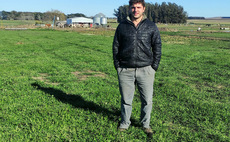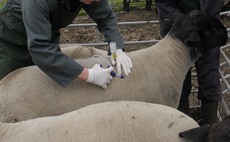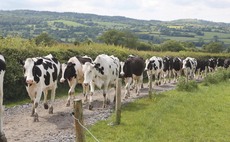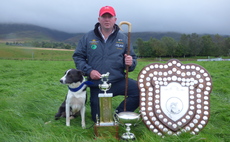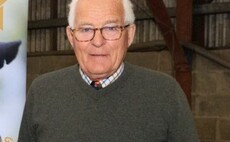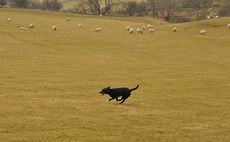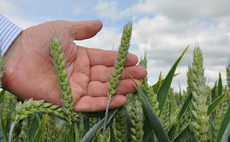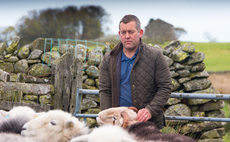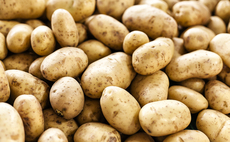
Dairy farmer, and fire fighter, Aled Lewis, says the arrival of robotic milkers on his family's farm has ensured he can commit to both his roles. Barry Alston reports.
THE daily routine has become a little easier for Aled Lewis, who combines running the family's West Wales dairy herd with a role as a retained senior fire fighter.
Three robotic milkers are now being put through their paces at Penybont Farm, on the outskirts of Tregaron, in Ceredigion, with the intention of increasing cow numbers by one third in the not so distant future.
The units have replaced a 37-year-old parlour, with the experience so far proving to be positive.
Just as important they have helped ease the pressures he faces every week on the local community's behalf in his role as watch manager at the town's mid and west Wales Fire and Rescue Service fire station and what in some weeks could be around 10 emergency call outs.
Aled says: "The round the clock five-minute turnout call could come at any time, even when we were milking the cows.
"But with the investment in the robots that is no longer a problem. They just carry on milking the cows whether we are there or not."
With a set of buildings already providing cubicle housing and slurry storage beneath slatted walkways, the only obstacle to increasing cow numbers on both the owner occupied 101-hectare (250 acres) home farm and a further 81ha (198 acres) on a second holding a mile away was the outdated parlour.
Grazing areas were already well served with paddocks and cow tracks and a replacement 14,000-litre bulk tank had fitted easily into an existing space.
"But the thinking was, why put up a new expensive structure to accommodate a larger more modern parlour when there was scope to incorporate milking facilities within the cow housing, as well as bringing other benefits?" says Aled.
Back in 1918 the farm was part of the 1,618ha (4,000 acres) Hafod Estate before being bought by three great uncles for just £3,750, two of them then leaving the business soon after to retail milk in London and Liverpool.
Family successions eventually saw Aled's grandfather and father running the farm with a purpose built parlour - the very first six-stall swingover in Wales - installed in 1963.
That was replaced by a 12:12 model in 1982 until the spring of 2019 saw the arrival of the Llely A5 robots.
Today, Aled is farming in partnership with his parents, Daniel and Ann, and younger brother, Lloyd. The intention is to be milking 180 commercial black and whites by the end of 2020.
"Having already being playing a key role at weekends and evenings, my brother and I came home to farm straight from school rather than going on to further education," says Aled.
"I did enrol on a day release basis at the local Felinfach College and took just about every hands-on practical approved training body course going, such as welding, chainsaw handling and mechanics, all of which helped to hone up my farming skills.
"At that time we were milking around 90 cows, before gradually moving up to the current 130 mark, calving all-year-round with the aim being to maintain a level milk supply through County Milk.
"But we faced two problems. The old parlour was continually breaking down and other than family labour we were having great difficulty finding someone who would be dedicated to getting the best out of the cows.
"With milking taking well over two hours something just had to be done and after thoroughly researching the possibilities robotics looked to be the ideal solution in our circumstances," says Aled.
He explains it only took around three days to get the cows to visit the robots and following a full summer and now at the halfway mark of the first winter he says the family is pleased with how they are performing.
"With our herd average standing at around the 10,000-litre mark, with butterfat at 4.1 per cent and protein at 3.4 per cent, we did find that while the cows were out at grass the yields tended to be down slightly due to the fact they were only making 2.2 milking visits per day to the robots, compared with 3.2 visits when housed.
"Even though at any one time they were no more than 400 metres from the robots on nice sunny days they were just not keen to make the walk. We even tried stopping the outdoor water availability in order to force them back to the buildings if they wanted a drink.
"By trial and error, though, we have learned that the secret is to get the feeding regime absolutely spot on. Get it right and there is no problem.
"The current ration is based around 18 per cent protein nuts, with the higher yielders getting up to 11kg in the robot.
Winter forage is made up of around 20kg per day of grass silage, together with 4kg of a blend fed twice a day from behind drive through passageway barriers.
"It is too wet to grow maize here and while we used to make all of our own clamp silage, the staff shortage and ageing machinery means we now use contractors for our three cuts."
Aled says a big plus factor with the robots is that they provide a wealth of information on how each individual cow is performing. He says: "This ranges from the times and number of visits, how much each has even chewed during the day, through to body weights and if there are any health problems building up.
The slats provide enough slurry storage for six months with the automatic scrapers keeping the walkways clean. Sand provides the cubicle bedding.
Aled adds: "If someone could also come up with a robotic silage pusher capable of dealing with slopes that would help eliminate the twice a day task of keeping feed in front of the cows."
"In the meantime our old tractor, complete with tyres as pushers, will have to continue with that job."
Breeding policy so far has been based around putting the cows to Hereford or British Blue bulls and selling the calves in local markets as 15-month-old stores.
However, for the immediate future Aled says they we will be buying in the extra milkers we are aiming for, though he does have some concerns from a bovine TB bio-security point of view.
He adds: "Maybe keeping a black and white bull could be a future possibility though ideally what I am looking for is someone with robot-trained replacements."
There is no house on the second farm but there is a sizeable shed large enough to accommodate what was a flying flock of 800 Mule ewes bought in annually as four to five year olds.
This winter has seen the number cut to 130 Improved Welsh ewes because of the higher prices being demanded for Mules.
They have been put to a Charollais ram, with the lambs being sold deadweight off grass, and with fewer sheep the ground will provide additional silage for the extra cows.
Aled's fire fighting role began 28 years ago when, returning from a visit to Australia - where he met his Manchester-born wife Larissa - he says he was ‘bored' having seen the life that was possible ‘down under'.
Having climbed up the ranks he now manages a crew of 10 and while fires these days are fairly few and far between car accidents and other emergencies, such as heart attacks and personal injuries, mean that given the availability of the thinly spread rapid medical response in such a rural area his team members are also trained first aid responders.
Incidents, especially involving children, can be harrowing and getting back to his self-milking cows these days provides some welcome relief. But that is not all.
"Among the many improvements the robots have made to our quality of life is that of not having to be at home by 4pm every day to start milking. My brother also now has the time to help out a local contractor," says Aled.
"We can easily finish work on the farm by 5pm and spend quality time with the family, as well as fulfilling the role of Ceredigion's county NFU chairman.
"With the old parlour there were times when my 12-year-old son, Elliot, would help with the milking, though he did find it ‘boring'. That now is not a problem. He just loves doing the milking."
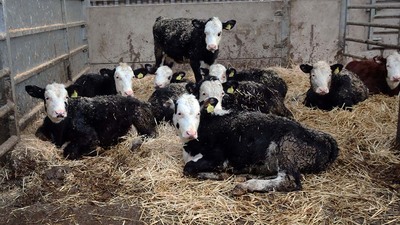
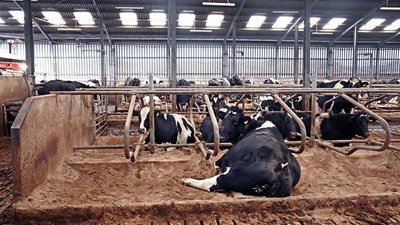
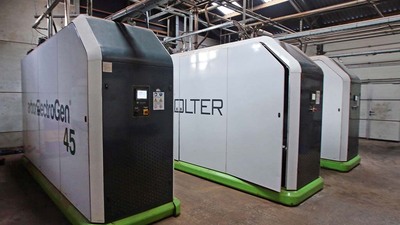
Farm facts
- Investment has also gone into solar panels and biomass boilers which provide power for around the farm and farmhouse, with surplus electricity being fed into the National Grid
- The aim is to get cows back in-calf within 100 days
- One of the robots is dedicated to the highest yielders and those in mid lactation and below visit the other two.






